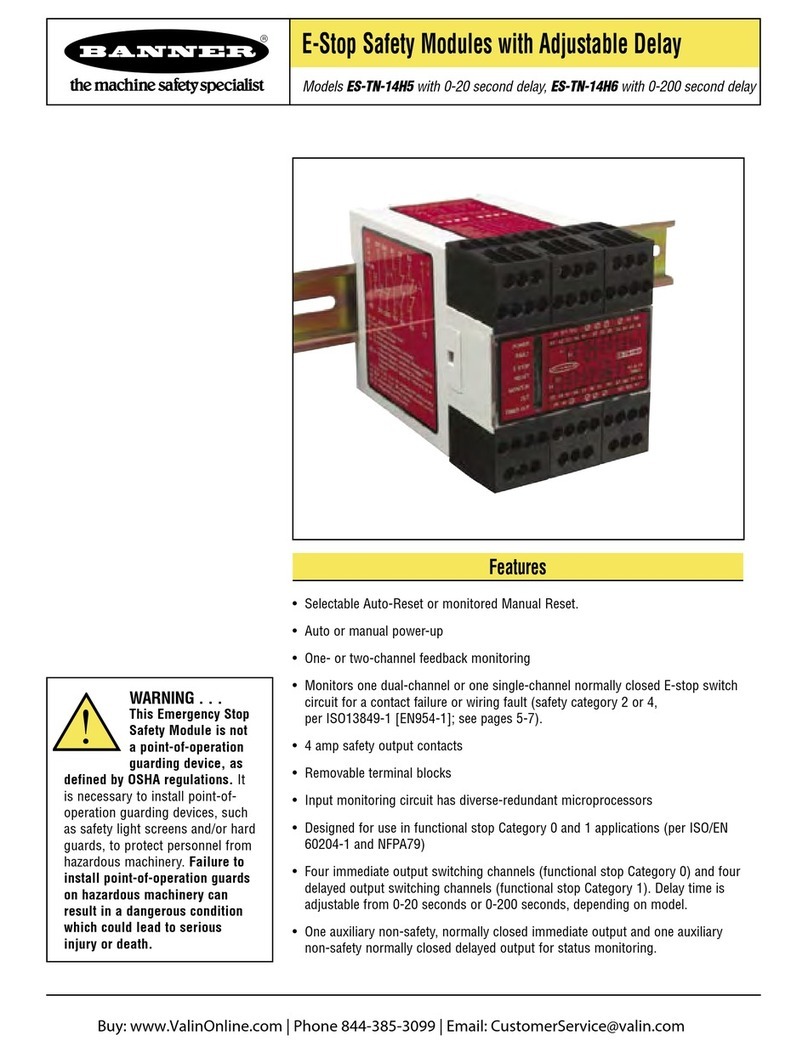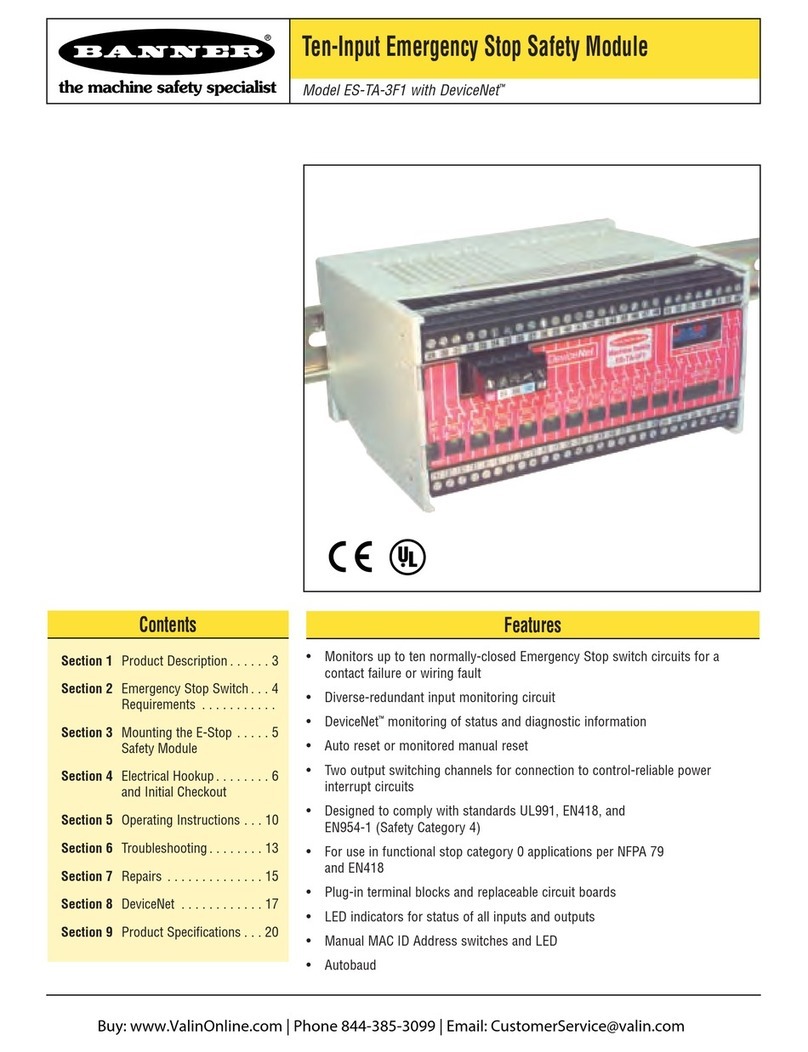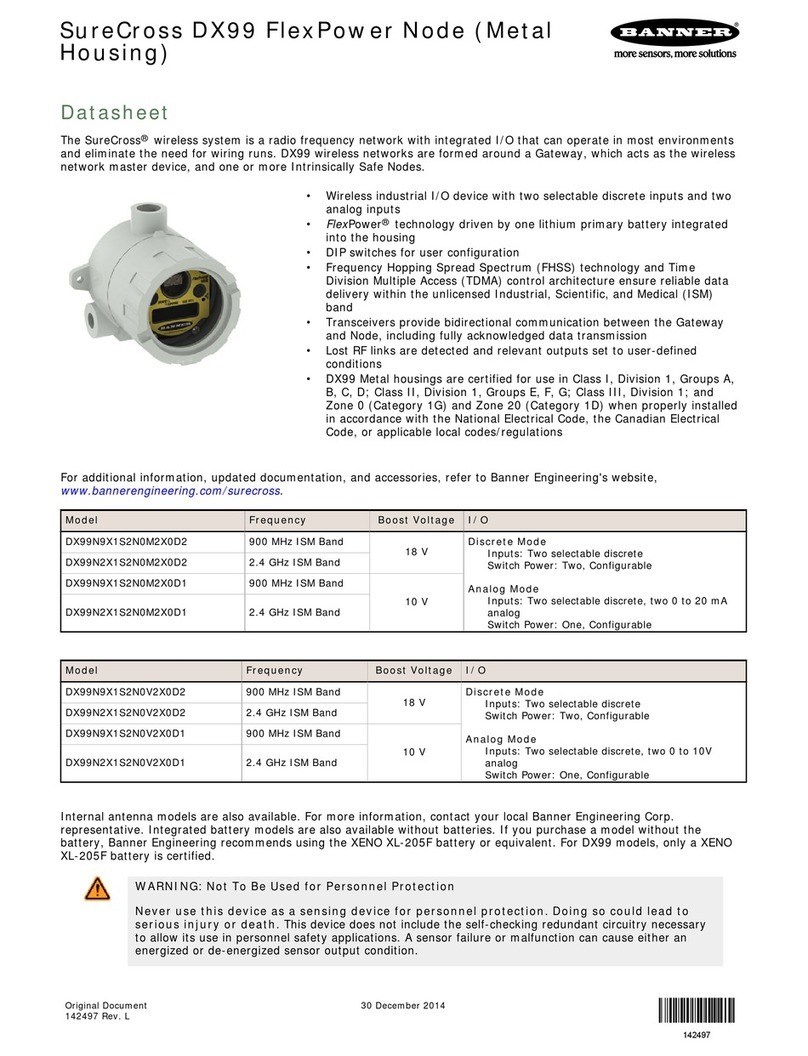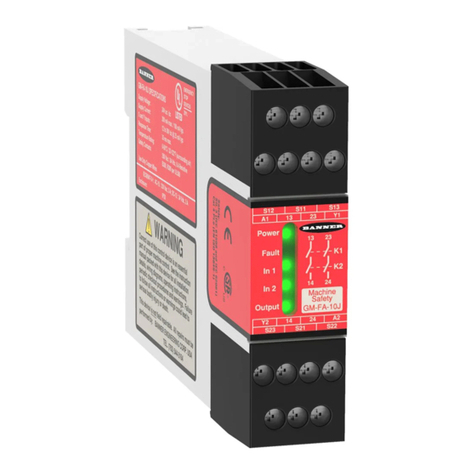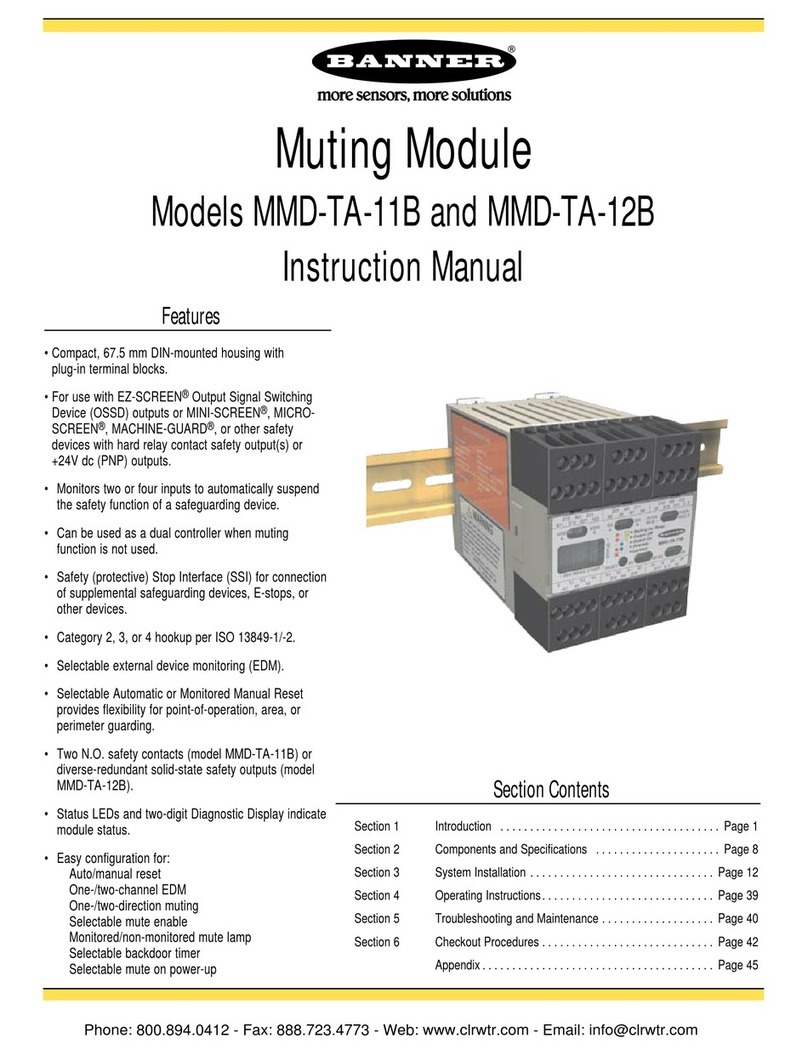Table of Contents
MM-TA-12B Muting Module
Instruction Manual
Important ...
read this before proceeding!
In the United States, the functions that the
Banner MM-TA-12B Muting Module is intend-
ed to perform are regulated by the
Occupational Safety and Health
Administration (OSHA). Outside of the United
States, these functions are regulated by a
variety of agencies, organizations, and gov-
ernments. Whether or not any particular MM-
TA-12B Muting Module installation meets all
applicable requirements depends upon fac-
tors that are beyond the control of Banner
Engineering Corp. These factors include the
details of how the MM-TA-12B Muting
Module is applied, installed, wired, operated,
and maintained. It is the responsibility of the
installer and user to apply this MM-TA-12B
Muting Module in full compliance with all
applicable regulations and standards.
The Banner MM-TA-12B Muting Module can
guard against accidents only when it is prop-
erly installed and integrated into the machine,
properly operated, and properly maintained.
Banner Engineering Corp. has attempted to
provide complete application, installation,
operation, and maintenance instructions. In
addition, we suggest that any questions
regarding application or use of the MM-TA-
12B Muting Module be directed to the factory
applications department at the telephone
number or addresses shown on the back
cover.
In addition to OSHA regulations, several other
organizations provide informational material
on the use of safeguarding devices. The user
is referred to the American National
Standards Institute (ANSI), the Robotics
Industries Association (RIA), the Association
for Manufacturing Technology (AMT), and
others. Banner Engineering Corp. makes no
claim regarding a specific recommendation of
any organization, the accuracy or effective-
ness of any information provided, or the
appropriateness of the provided information
for a specific application. See Appendix C for
information pertaining to applicable U.S.,
European, and International standards and
where to acquire copies.
The user has the responsibility to ensure that
all local, state, and national laws, rules,
codes, and regulations relating to the use of
this safeguarding system in any particular
application are satisfied. Extreme care is
urged to ensure that all legal requirements
have been met and that all installation and
maintenance instructions contained in this
manual are followed.
Table of Contents
1.Introduction ...................................................................... page 3
1.1 Overview ........................................................................................page 3
1.2 Operating Status LEDs and Diagnostic Display ............................ page 4
1.3 Automatic or Monitored Manual Reset Select .............................. page 4
1.4 Lockout Conditions ...................................................................... page 5
1.5 Control Reliability: Redundancy and Self-Checking ...................... page 5
1.6 Muteable Safety Stop Interface (MSSI) ........................................ page 6
1.7 Universal Safety Stop Interface (USSI) ..........................................page 6
1.8 OSSD Outputs .............................................................................. page 6
1.9 Auxiliary Output (Aux) ....................................................................page 6
1.10 External Device Monitoring (EDM) ................................................page 7
1.11 Mute Devices and Mute Inputs (M1-M4) ......................................page 7
1.12 Mute Enable (ME) ..........................................................................page 8
1.13 Mute Lamp Output (ML) ................................................................page 9
1.14 Backdoor Timer ..............................................................................page 9
1.15 Mute on Power-Up ........................................................................page 9
1.16 Override ........................................................................................page 10
1.17 One-Way/Two-Way Muting ..........................................................page 10
1.18 Designated and Qualified Persons................................................page 10
2.Specifications .................................................................... page 11
2.1 Accessories ................................................................................ page 13
3.System Installation.............................................................. page 14
3.1 Appropriate Application .............................................................. page 14
3.2 Installing the Module .................................................................. page 17
3.3 Muting Module Configuration .................................................... page 18
3.4 Connector Pinouts/Functions ...................................................... page 18
3.5 Installing Input Devices ................................................................page 20
3.6 Machine Interface Connection – Initial Hookup and Checkout .. page 30
3.7 Permanent Hookup...................................................................... page 32
3.8 Commissioning Checkout .......................................................... page 35
4.Operating Instructions .......................................................... page 39
4.1 Security Protocol ........................................................................ page 39
4.2 Periodic Checkout Requirements................................................ page 39
4.3 Normal Operation ........................................................................ page 39
5.Troubleshooting and Maintenance............................................ page 40
5.1 Troubleshooting Lockout Conditions .......................................... page 40
5.2 Diagnostic Display........................................................................page 40
5.3 Effects of Electrical and Optical Noise ........................................ page 40
5.4 Repairs ........................................................................................ page 42
6.Periodic Checkout Procedures ................................................ page 43
6.1 Schedule of Checkouts ................................................................page 43
6.2 Commissioning Checkout .......................................................... page 43
6.3 Daily Checkout..............................................................................page 46
6.4 Semi-Annual Checkout .............................................................. page 47
Appendix
Appendix A, Mute Timing Sequences ........................................................page 48
Appendix B, Typical Muting Applications ..................................................page 49
Appendix C, Application Safety Standards ................................................page 55
